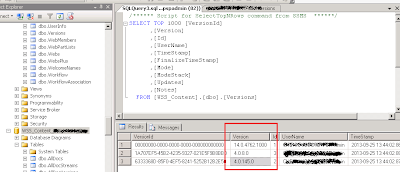What is Active Directory ?
- What is Active Directory?
An active directory is a directory structure used on Microsoft Windows based computers and servers to store information and data about networks and domains. It is primarily used for online information and was originally created in 1996. It was first used with Windows 2000.
An active directory (sometimes referred to as an AD) does a variety of functions including the ability to rovide information on objects, helps organize these objects for easy retrieval and access, allows access by end users and administrators and allows the administrator to set security up for the directory.
Active Directory is a hierarchical collection of network resources that can contain users, computers, printers, and other Active Directories. Active Directory Services (ADS) allow administrators to handle and maintain all network resources from a single location . Active Directory stores information and settings in a central database
- What is LDAP?
The Lightweight Directory Access Protocol, or LDAP , is an application protocol for querying and modifying directory services running over TCP/IP. Although not yet widely implemented, LDAP should eventually make it possible for almost any application running on virtually any computer platform to obtain directory information, such as email addresses and public keys. Because LDAP is an open protocol, applications need not worry about the type of server hosting the directory.
- Can you connect Active Directory to other 3rd-party Directory Services? Name a few options.
-Yes you can connect other vendors Directory Services with Microsoft’s version.
-Yes, you can use dirXML or LDAP to connect to other directories (ie. E-directory from Novell or NDS (Novel directory System).
-Yes you can Connect Active Directory to other 3rd -party Directory Services such as dictonaries used by SAP, Domino etc with the help of MIIS ( Microsoft Identity Integration Server )
- Where is the AD database held? What other folders are related to AD?
AD Database is saved in %systemroot%/ntds. You can see other files also in this folder. These are the main files controlling the AD structure
ntds.dit
edb.log
res1.log
res2.log
edb.chk
When a change is made to the Win2K database, triggering a write operation, Win2K records the transaction in the log file (edb.log). Once written to the log file, the change is then written to the AD database. System performance determines how fast the system writes the data to the AD database from the log file. Any time the system is shut down, all transactions are saved to the database.
During the installation of AD, Windows creates two files: res1.log and res2.log. The initial size of each is 10MB. These files are used to ensure that changes can be written to disk should the system run out of free disk space. The checkpoint file (edb.chk) records transactions committed to the AD database (ntds.dit). During shutdown, a “shutdown” statement is written to the edb.chk file. Then, during a reboot, AD determines that all transactions in the edb.log file have been committed to the AD database. If, for some reason, the edb.chk file doesn’t exist on reboot or the shutdown statement isn’t present, AD will use the edb.log file to update the AD database.
The last file in our list of files to know is the AD database itself, ntds.dit. By default, the file is located in\NTDS, along with the other files we’ve discussed
http://aacable.wordpress.com/2010/02/18/106/
http://aacable.wordpress.com/2010/02/18/106/

Comments
Post a Comment